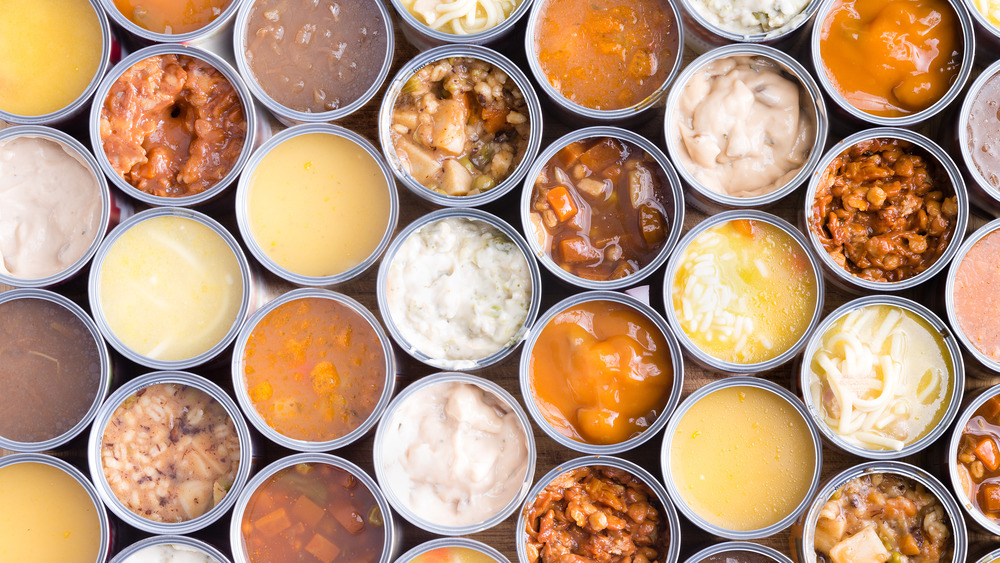One Thing That Might Be Hiding In Your Canned Soup
When it comes to cooking, more times than not, folks like to go for the quickest thing they can make. Whether they travel into the land of takeout or grab a ready-made meal from their fridge, there is no denying that people love convenience when the time to eat arises. Because of this, food companies have been able to create products that cater to the lives of anyone ranging from busy parents to the somewhat sluggish college student.
A quick stroll at your local grocer will provide your senses with the sights of things like frozen pizza, supermarket sushi, and a cacophony of canned soups. Soups, in particular, have always been a fan favorite because of the ease of making it. According to Statista, over 63 million Americans grab a Campbell's Soup every time they are food shopping with over 180 million Americans grabbing some dry bouillon as well. Despite all this fervor for soup, there is something Americans might not know about their canned meals: Gluten can be found in most soups.
Gluten is used as a thickening agent within soups
According to Celiac Disease Foundation, sauces and soups are two of the biggest culprits in carrying hidden gluten, so it is highly important to read the nutritional labels on each can if you experience gluten sensitivity or allergies. The foundation cites that gluten, which can be found in other sources like cereal and some grains, is used to add thickness to soups to make them less watery.
Urban Taste Bud reports that gluten is so prevalent within canned soups that anything from chicken noodle soup to clam chowder is packed with gluten — making it difficult to find gluten-free options and brands. Very Well Fit adds that cream-based soups carry the most gluten because of the use of wheat flour to thicken it, but that there is hope on the horizon. The publication notes that the increasing prevalence of gluten sensitivities, allergies, and interest in gluten-free items has motivated companies to offer more gluten-free products.

